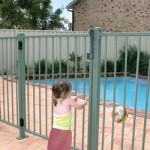 NSW Water Safety Award
NSW Water Safety Award
The Samuel Morris Foundation has won an award for “the Most Outstanding Contribution to Water Safety with a focus on an under-represented group” at the 2011 NSW Water Safety Awards. The NSW Water Safety Awards are presented by the NSW Government and hosted by Austswim. On this occasion the awards were presented by the Hon Graham Annesley, the Minister for Sport and Recreation.
Second Water Safety Award win for the Foundation
This is the second time that the Foundation has won this prestigious award, the first occassion being in 2008.
The award win is an acknowledgement of the work that we do at the Samuel Morris Foundation in supporting children disabled by near drowning and working to prevent future drowning death and disability through education and awareness.
There is still a lot of Water Safety work to be done…
In NSW, an average of 6.75 drowning deaths and an average of 24.91 hospital admissions occurred per year between 2007/08 to 2009/10 among children 0-4 years as a result of near drownings in swimming pools. This equates to 4-5 children being hospitalised for every child death in this age group (this figure is based on the assumption in the report that the drowning deaths are included in the hospitalisations, although this assumption is NOT clearly spelled out in the literature or data, and given that there is evidence that a significant number of drowning fatalities never actually make it a hospital, but are pronounced dead at the scene of the drowning, if they are excluded from this data then the ratio of drowning deaths to hospital admissions is significantly higher).
Of the 24.91 admissions, evidence from the Australian Institute of Health and Welfare (AIHW) suggests that approximately 22.3% (5.56 children annually in NSW) will experience permanent brain damage, and it is these children that the Foundation supports.
These children have been almost invisible.
Despite these statistics the plight of near drowning survivors has historically been absent from media coverage, academic discussion and debate about policy and lawmaking. The absence of these figures has distorted previous cost benefit analysis used by Government in formulating policy and legislative change. An example of this is that the previous NSW Government used the argument about the lack of a clearly demonstrated cost/benefit ratio to avoid introducing a mandatory inspection regime, like those in place in Western Australia and those recently introduced in Queensland, when they announced changes to the Swimming Pools Act and Regulations in December 2009.
The picture changes when near drownings are included
An updated cost benefit analysis has been undertaken by KidsHealth [ http://kidshealth.chw.edu.au/sites/kidshealth.chw.edu.au/files/attachments/754/briefing_paper-_swimming_pool_safety_2.pdf ] that includes near drowning statistics in the cost benefit analysis and shows a clear benefit to the community through the introduction of a mandatory pool safety inspection program. This report also highlights the fact that additional savings which would be achieved to the Health Budget (and the community more broadly) through a reduction in medical treatment and support costs associated with the life time care and support of children disabled through near drowning have not been included, and this would further increase the potential benefit to the community of an inspection program.
Meeting the Water Safety Strategy Targets
The Australian Water Safety Strategy 2008-2011 identified children under five years of age and home swimming pools as high risk and priority areas for drowning prevention. The Strategy aims to reduce drowning deaths and near drowning by 50% by 2020 and recommends supervision, pool fencing, cardio-pulmonary resuscitation (CPR) and water familiarisation to reduce drowning among children under five years of age. Supervision plays a role in the majority of drowning cases, with over 75% of children under five years of age having been left alone without adult supervision. There is also strong evidence that a large proportion of children under five years of age who drown in swimming pools, do so as a result of fencing that is not compliant with the Australian Standards.
The Samuel Morris Foundation welcomes the fact that in the 2011 National Drowning Report produced by Royal Life Saving there has been a reduction in the number of drowning deaths in the 0-4 age group. However they are still over-represented in the drowning statistics with children in this age group comprising less than 7% of the Australian population but 9% of the total drowning deaths.
A need for immediate action in NSW
The NSW Government could have an immediate and lasting impact on meeting the target set in the Australian Water Safety Strategy through the implementation of some significant changes to the NSW Swimming Pools Act and associated legislation to introduce an ongoing home pool safety inspection program similar to those in Western Australia and Queensland. The Samuel Morris Foundation urges the Minister for Police and Emergency Services, the Minister for Local Government and the Minister for Sport and Recreation and the Premier all of whom have either portfolio or political responsibilities for meeting this target to convince their cabinet and parliamentary colleagues to implement the changes that the Samuel Morris Foundation and other water safety advocates have been calling for, including a mandatory inspection program, in addition to an increase in community education and awareness. Further delays in implementing these changes will condemn more families to the experience of death or disability of their children through drowning.
How you can help!
You can help convince NSW politicians to take the action necessary to achieve the changes and meet the drowning prevention targets, how?
You can find the contact details for all NSW Politicians here, look up your local member of parliament or upper house member and send them an email or letter asking them to support the introduction of changes to NSW Legislation to help reduce the rate of child drowning and disability and CC this email or letter to the Ministers for Police and Emergency Services, Sport and Recreation and Local Government as well as the Premier.




Leave a Reply